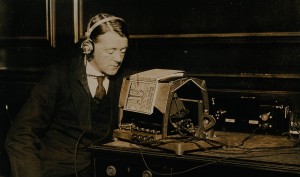 How We Read: A Sensory History of Books for Blind People
How We Read: A Sensory History of Books for Blind People
Peltz Gallery, School of Arts, Birkbeck, London WC1H 0PD
November 17-23, 2014
“How We Read” is a free exhibition of assistive technologies designed to help blind people read. From raised print to talking books and optophones, a fascinating array of historic artefacts will be on display from museums, archives, and other centres dedicated to preserving the heritage of blindness. For the past two centuries, such devices have made reading material accessible to hundreds of thousands of visually disabled readers in Britain.
This exhibition will introduce visitors to a range of reading formats beyond the conventional book whilst encouraging reflection on the ways in which different sensory modes have been privileged at certain historical moments and by changing communities of readers. Giving the public a chance to see, hear, and touch different types of books, “How We Read” aims to expand conceptions of what it means to be human, by exploring the many ways in which we do something as simple as read a book.
A series of hands-on activities, interactive workshops, and live performances will allow visitors to try out for themselves alternative ways of reading. These include: descriptive tours led by an experienced museum curator; a workshop in which participants learn how to read Braille and other raised types using their fingertips; a panel led by visually impaired readers who will share their experiences of reading books in different media; and a live reading by a professional actor who has recorded books for people who are blind.
The exhibition runs from 17-23 November 2014, with a special reception and other events planned for Saturday November 22. Full details can be found on the website. The exhibition is part of the Being Human Festival (http://beinghumanfestival.org/), the UK’s first national festival of the humanities.
For more information: http://www.howweread.co.uk/